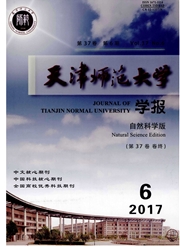

 中文摘要:
中文摘要:
为了研究内蒙古草原返青期对气候的响应,利用2001—2011年的遥感增强型植被指数(EVI)反演内蒙古草原区的返青期,并结合同期研究区内34个气象站点的气温和降水量数据,对该地区返青期的线性趋势及其对气候要素的时空响应特征进行分析.结果表明:内蒙古草原气象站点间的春季水热条件和返青期差异明显,总体上研究区南部的返青期偏早,在研究区中部和北部的返青期偏晚,最大相差46 d;在研究时段内,草原返青期在8%的站点上有显著的变化趋势.在时间序列上,24%的站点的返青期与其前期气温显著负相关,50%的站点返青期与其前期降水量显著负相关,早春气温的升高和降水量的增加会促进返青期的提前.空间分布上,在降水量充沛且降水量增加较快的区域,返青期提前趋势越大;反之,在降水量缺乏以及降水量减少较快的地区,返青期没有提前甚至有推迟趋势;气温对返青期趋势的作用比降水更复杂,这是由于气温的升高在带来草原返青所需热量的同时,加重了部分地区的干旱胁迫.
 英文摘要:
英文摘要:
In order to find the response of grassland green up date to climate in Inner Mongolia, the linear trend of green up date and its spatio-temporal response to factors Were analyzed using enhanced vegetation index (EVI) data to derive green up date in Inner Mongolia grassland from 2001 to 2011, combining corresponding period temperature and precipitation data of 34 stations in the area. The results show that spring hydrothermal condition and green up date are quite different among different sites in Inner Mongolia grassland. In general, green up date is early in the south of research area and is late in the middle and north parts whose maximum difference is 46 days. Grassland green up date have significant trend on 8% stations in the research period. In time series, green update has significant negative correlation with its previous temperature on 24% stations, while it has significant negative correlation with its previous precipitation on 50% stations, and higher early spring temperature and more precipitation would likely to cause grassland green up being earlier. In spatial, the green update has higher advanced trend in the areas where precipitation is humid and fast increased. On contrary, the green update does not have advance trend or even have delay trend in arid and precipitation decreased areas. Temperature has complex influence on the trend of green up date because rising temperature brings heat to grassland at the same time causes drought in some region.
 同期刊论文项目
同期刊论文项目
 同项目期刊论文
同项目期刊论文
 期刊信息
期刊信息
